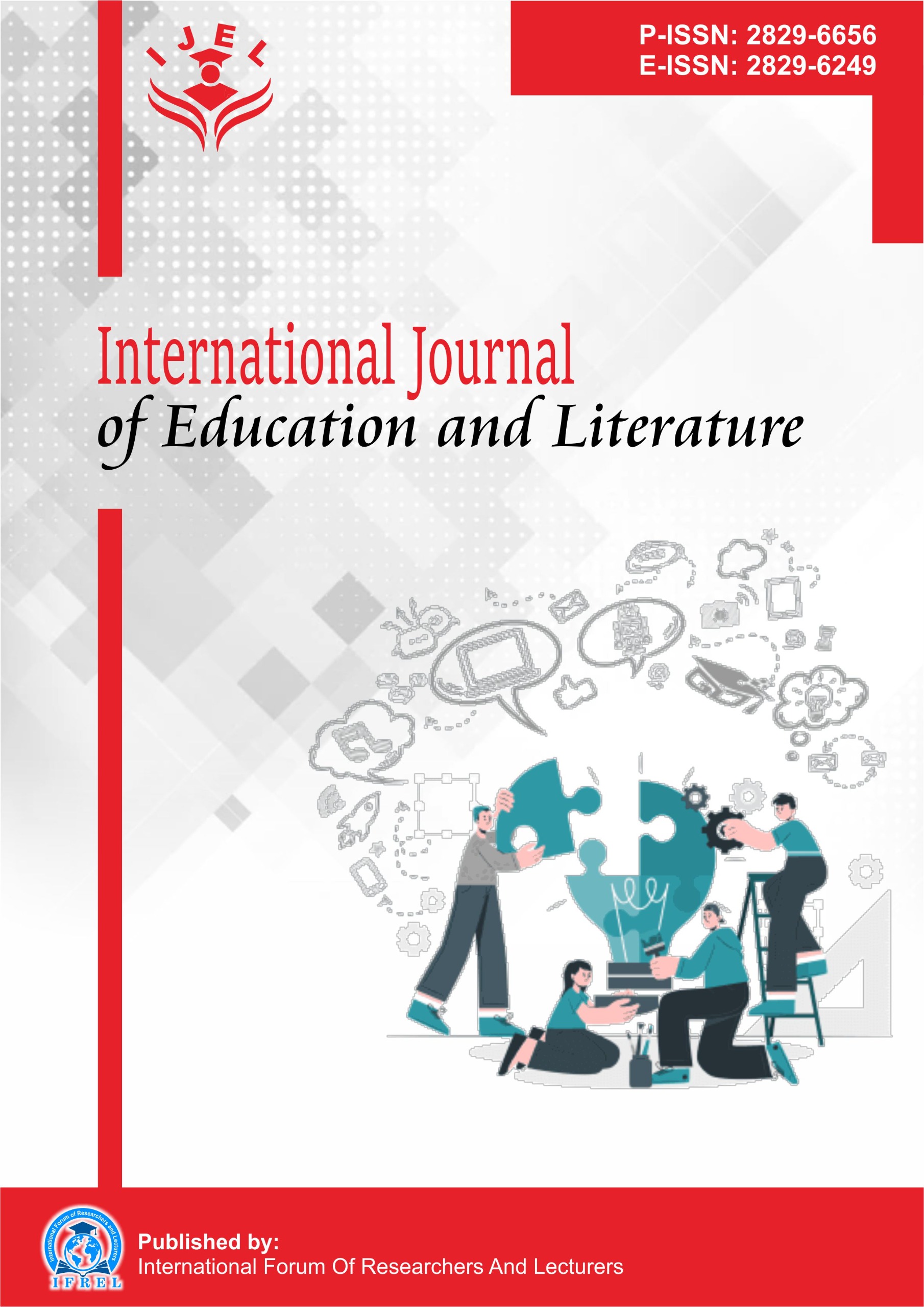Implementation of Active, Innovative, Creative, Effective, and Enjoyable Learning Models (PAIKEM) in Islamic Religious Education (PAI) Subjects in Grade VII Darul Ishlah Junior High School in the 2024/2025 Academic Year
DOI:
https://doi.org/10.55606/ijel.v4i2.262Keywords:
Active Learning, Islamic Religious Education, PAIKEM Model, Qualitative Research, Teacher CreativityAbstract
Teachers are required to adopt a wise and thoughtful approach in teaching, since their perception of students will influence their attitudes and actions. Not all teachers assess students in the same way, and this affects the methods they apply in the classroom. To achieve optimal learning outcomes, teachers must take on new roles as facilitators, mediators, learning partners, and evaluators. This means creating a democratic and dialogical learning atmosphere between teachers and students, as well as among students themselves. One effective way is by applying the PAIKEM learning model (Active, Innovative, Creative, Effective, and Enjoyable). This study aims to: (1) Describe the implementation of the PAIKEM model in Islamic Religious Education for Grade VII at Darul Ishlah Junior High School. (2) Describe the obstacles encountered in applying this model. The research uses a qualitative approach with interviews, observation, and documentation as data collection techniques. Data analysis was conducted through reduction, presentation, and conclusion drawing. The results indicate that the PAIKEM model has been implemented well, through discussions, opportunities for students to express opinions, group assignments, interactive communication, motivation, use of media such as videos, and enjoyable memorization. However, challenges include limited learning media, teachers’ creativity that is not yet optimal, inadequate facilities and infrastructure, and low student motivation.
References
Asari, S., Pratiwi, S. D., Ariza, T. F., Indapratiwi, H., Putriningtyas, C. A., Vebriyanti, F., & Rahim, A. R. (2021). Paikem (pembela-jaran aktif, inovatif, kreatif, efektif dan menyenangkan). DedikasiMU: Journal of Community Service, 3(4), 1139-1148. https://doi.org/10.30587/dedikasimu.v3i4.3249
Berliana, A. U., Mailizar, M., Faiza, F., & Leonard, L. (2021). Pengembangan media pembelajaran berbasis android melalui model pembelajaran PAIKEM (Pembelajaran Aktif, Inovatif, Kreatif, dan Menyenangkan). Journal of Instructional Devel-opment Research, 2(2), 57-68.
Fauziah, N. S., & Sahlani, L. (2023). Implementasi model pembelajaran aktif, inovatif, kreatif, efektif dan menyenangkan (PAIKEM) dalam meningkatkan motivasi belajar peserta didik. Islamic Journal of Education, 2(1), 21-30. https://doi.org/10.54801/ijed.v2i1.172
Fawzi, T., & Dodi, L. (2022). Aspek Perkembangan Manajemen Pembelajaran Active Learning, Paikem Pada Kelas Unggu-lan. Attadrib: Jurnal Pendidikan Guru Madrasah Ibtidaiyah, 5(2), 64-75. https://doi.org/10.54069/attadrib.v5i2.247
Irham, M., & Wiyani, N. . (2023). Psikologi Pendidikan: Teori dan Aplikasi dalam Proses Pembelajaran. Ar-Ruzz Media.
Ismail, S. . (2018). Pembelajaran Agama Islam Berbasis PAIKEM (Pembelajaran Aktif, Kreatif, Inovatif, Efektif, Dan Me-nyenangkan). RaSAIL Media Group.
Jauhar, M. (2011). Implementasi PAIKEM dari Behavioristik sampai Konstruktivistik. Prestasi Pustaka.
Kesuma, M. I. J., Cahya Ajir, I., Syafe'i, I., & Hadiati, E. (2025). Penerapan strategi PAIKEM dalam pembelajaran Pendidi-kan Agama Islam di SDN 2 Palapa untuk mencegah distraksi gawai. TA'LIMUNA: Jurnal Pendidikan Islam, 14(1), 1-14. https://doi.org/10.32478/wnkfw549
Majid, N. (2016). Pluralitas Agama; Kerukunan Dalam Keragaman. Kompas Media Nusantara.
Maujud, F., Nurman, M., & Sultan, S. (2022). Penerapan Model Pembelajaran Paikem (Pembelajaran Aktif, Inovatif, Kreatif, Efek-tif Dan Menyenangkan). El-Tsaqafah: Jurnal Jurusan PBA, 21(1), 83-99. https://doi.org/10.20414/tsaqafah.v21i1.5267
Moelong, L. . (2019). Metodologi Penelitian Kualitatif. Remaja Rosdakarya.
Mulyana, D. (2014). Metodologi Penelitian Kualitatif. Remaja Rosdakarya.
Ngalimun. (2017). Strategi Pembelajaran. Ar-Ruzz Media.
Rahman, A. R. (2019). Metode Penelitian Pendidikan. Alfabeta.
Rihlasyita, W., & Rahmawati, R. D. (2022). Analisis Penerapan Metode Paikem Gembrot dalam Pembelajaran Bahasa Arab di Era Pandemi: Analisis Penerapan Metode Paikem Gembrot dalam Pembelajaran Bahasa Arab di Era Pandemi. EDUSCOPE: Jurnal Pendidikan, Pembelajaran, Dan Teknologi, 8(1), 40-55. https://doi.org/10.32764/eduscope.v8i1.2494
Rohana, S. . (2022). MODEL PEMBELAJARAN PAIKEM PADA MATA PELAJARAN PENDIDIKAN AGAMA IS-LAM DI SEKOLAH DASAR. Al-Ihtirafiah: Jurnal Ilmiah Pendidikan Guru Madrasah Ibtidaiyah, 2(2), 327-345. https://doi.org/10.47498/ihtirafiah.v2i02.1241
Sadiman, A. (2017). Media Pendidikan, Pengertian,. Pengembangan, dan Pemanfaatannya. Rajagrafindo Persada.
Sudjana, N. (2013). Cara Belajar Siswa Aktif. PT Sinar Baru Algesindo.
Sugiyono. (2022). Metodologi Penelitian Kuantitatif, Kualitatif Dan R&D. ALFABETA.
Yudhi, & Hamid, F. (2009). Strategi Dan Model-Model Pembelajaran Aktif, Inovatif, Kreatif, Efektif, Dan Menyenangkan. UIN Syarif Hidayatullah Press.
Downloads
Published
How to Cite
Issue
Section
License
Copyright (c) 2025 International Journal of Education and Literature

This work is licensed under a Creative Commons Attribution-ShareAlike 4.0 International License.







